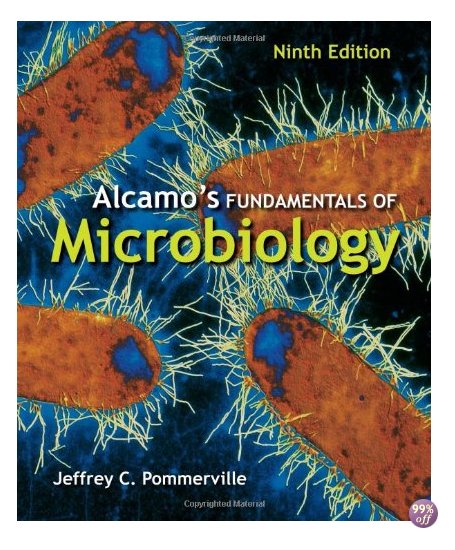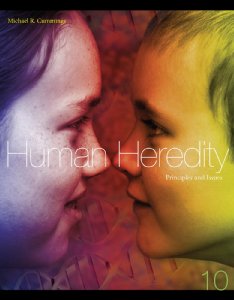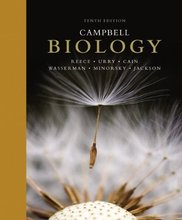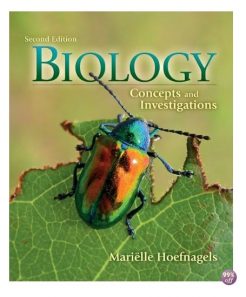Description
- The item being sold is not the textbook. This study guide can be used for your university class / college course or online course / online university / edu online, whether you are studying for your bachelor degree or masters degree. Also great for your short summer courses / summer session.
- Please note that the files are compressed using the program Winzip.
- Files ending with the extension (.pdf) can be opened using Adobe Acrobat Reader.
- Files ending with the extension (.doc) , (.docx) or (.rtf) can be opened using Microsoft Word Viewer 2007.
Chap01, Chapter 1
Multiple Choice
1. Who was one of the early natural philosophers who coined the name “cella” for the empty cork spaces that became the word we use today, “cells”?
A. Robert Hooke
B. Zacharias Janssen
C. Francesco Stalluti
D. Giovanni Faber
Ans: A
2. Leeuwenhoek made lenses that allowed him to magnify objects more than 200X. However, he failed to promote scientific inquiry because:
A. he didn’t share his drawings with other scientists.
B. he didn’t reveal how he ground the lenses and no one else was doing it that well.
C. he limited his research to pond water
D. it was only a hobby and he didn’t live very long
Ans: B
3. Leeuwenhoek was the first person to:
A. see viruses.
B. use a microscope.
C. describe bacteria.
D. suggest animalcules caused disease.
Ans: C
4. Francesco Redi is famous for performing one of the first experiments over the debate regarding spontaneous generation. What was his experiment?
A. He boiled some mutton gravy and sealed the tops with corks.
B. He covered some jars of meat with gauze and left others open. The covered jars did not develop maggots, the uncovered ones did.
C. He showed that mice will appear with damp rags and rice.
D. He boiled broth for longer periods of time and sealed the tops with melted glass.
Ans: B
5. ________ did not attempt to prove or refute the idea of spontaneous generation.
A. Francesco Redi
B. Robert Koch
C. Lazzaro Spallanzani
D. Louis Pasteur
Ans: B
6. Which one of the following would be consistent with the idea of spontaneous generation?
A. Microorganisms may be cultivated on solid laboratory media.
B. Insects are important in the transmission of disease.
C. Sick people give rise to microorganisms in their body.
D. Disinfection is essential to prevent the spread of microorganisms.
Ans: C
7. Spallanzani’s experiments showed that:
A. viruses were transmitted by water.
B. spontaneous generation occurs.
C. miasma was the cause of disease.
D. experiments can be modified to test a hypothesis.
Ans: D
Page: 8
8. Which pair of scientists were antagonists during the same period of history?
A. Pasteur and Ehrlich
B. Koch and Leeuwenhoek
C. Spallanzani and Needham
D. Pasteur and Snow
Ans: C
9. Semmelweis showed that the transmission of disease could be interrupted by:
A. killing disease-carrying mosquitoes.
B. disinfecting water supplies.
C. pasteurizing milk.
D. washing hands in chlorine water.
Ans: D
10. In 1854, John Snow determined that contaminated water transmits:
A. smallpox.
B. cholera.
C. influenza.
D. anthrax.
Ans: B
11. John Snow traced the source of an 1854 outbreak of cholera to:
A. consumption of contaminated beef.
B. an increase in infected mosquitoes.
C. yeast cells on contaminated apples.
D. a contaminated municipal water supply.
Ans: D
12. Who was Edward Jenner?
A. He was a surgeon who observed cowpox could provide immunity for smallpox.
B. He was a physician who discovered washing your hands can reduce disease transmission.
C. He was the first to see a pathogen that causes disease.
D. All of the above are correct.
Ans: A
13. What was Christian Ehrenberg responsible for naming in the 1830’s?
A. He gave the name “vaccines.”
B. He gave the name “eukaryotes”.
C. He gave the name “bacteria”.
D. He gave the name “cells”.
Ans: C
14. The classical Golden Age of microbiology came to an end partly due to the:
A. fact that all infectious diseases were known.
B. death of Anton van Leeuwenhoek.
C. the beginning of World War I.
D. end of the Renaissance.
Ans: C
15. Pasteur’s study of fermentation was critical to the development of microbiology because:
A. fermentation chemistry occurs in the living body.
B. it showed that microorganisms bring about chemical changes.
C. it demonstrated that yeasts are microorganisms
D. the body undergoes rapid fermentation after death.
Ans: B
16. Pasteur’s studies proved that alcohol was a fermentation product of:
A. bacteria.
B. yeasts.
C. algae.
D. a natural chemical process not involving living organisms.
Ans: B
17. Pasteur first suggested that bacteria could cause disease in humans by showing that bacteria could:
A. contaminate canned foods.
B. cause plant diseases.
C. sour wine.
D. infect animals.
Ans: C
18. Pasteur’s observations that protozoa were related to the silkworm disease strengthened his belief in the:
A. germ theory of disease.
B. doctrine of spontaneous generation.
C. eukaryotic nature of protozoa.
D. None of the above is correct.
Ans: A
19. Lister used __________ to clean wounds and surgical instruments.
A. antibiotics
B. antitoxins
C. chlorine water
D. carbolic acid
Ans: D
20. Koch’s postulates provided guidelines for:
A. relating certain microorganisms with certain diseases.
B. sterilizing laboratory supplies.
C. preparing pure cultures.
D. testing the sensitivity of microbes to antibiotics.
Ans: A
21. Koch was responsible for thorough observations on the organisms of:
A. measles and diphtheria.
B. diphtheria and plague.
C. plague and tetanus.
D. tuberculosis and anthrax.
Ans: D
22. Pasteur was able to prepare a vaccine against rabies even though:
A. rabies was not a deadly disease.
B. he was unable to see the organism.
C. he had no experience with microorganisms.
D. None of the above is correct.
Ans: B
23. Which coworker of Koch’s demonstrated that diphtheria could be treated with an antitoxin?
A. Roux.
B. Yersin.
C. von Behring.
D. Pasteur.
Ans: C
24. The accomplishments of Koch include all the following except:
A. development of the rabies vaccine.
B. isolation of the tuberculosis bacterium.
C. development of culture techniques.
D. proof of the germ theory of disease.
Ans: A
25. Which scientists showed diphtheria was caused by a bacterial toxin?
A. Roux and Yersin
B. Pasteur and Koch
C. Luria and Delbrück
D. von Behring and Roux
Ans: A
26. Studies during the classical Golden Age included all the following diseases except:
A. malaria.
B. tuberculosis.
C. plague.
D. measles.
Ans: D
27. Which scientists worked independently to show the infectious nature of the tobacco mosaic virus?
A. Roux and Yersin
B. Koch and Behring
C. Kitasato and Metchnikoff
D. Ivanowsky and Beijerinck
Ans: D
28. Two of the earliest environmental microbiologists were:
A. Winogradsky and Beijerinck.
B. Ivanowsky and Beijerinck.
C. Luria and Delbrück.
D. Hershey and Chase.
Ans: A
29. All of the following are examples of new emerging infectious diseases except:
A. SARS.
B. chickenpox.
C. Lyme disease.
D. AIDS.
Ans: B
30. The bacillus and coccus shapes are typical of the:
A. fungi.
B. bacteria.
C. viruses.
D. protista.
Ans: B
31. Movement by flagella or cilia is typical of the:
A. fungi.
B. protozoa.
C. bacteria.
D. viruses.
Ans: B
32. In 1943 Luria and Dulbrück used ______________ to show that mutations can arise spontaneously.
A. Vibrio cholera
B. Staphylococcus epidermidis
C. Pseudomonas aeruginosa
D. Escherichia coli
Ans: D
33. Beadle and Tatum used the fungus Neurospora to show that:
A. one gene codes for one enzyme.
B. mutations can be induced by the environment.
C. DNA is the genetic component of cells.
D. all cells can have parasites.
Ans: A
34. Hershey and Chase proved that:
A. bacteria reproduce.
B. viruses cause human disease.
C. bacteria lack a membrane envelope.
D. DNA is the genetic material of cells.
Ans: D
35. Which of the following types of cells are Prokaryotes?
A. Fungi
B. Protests
C. Bacteria
D. Viruses
Ans: C
36. The “magic bullet” of Paul Ehrlich was:
A. a vaccine against plague.
B. an antitoxin that cured diphtheria.
C. a chemical used to treat syphilis.
D. a method for pasteurizing milk and dairy products.
Ans: C
37. Penicillin was discovered by:
A. Waksman.
B. Domagk.
C. Fleming.
D. Ehrlich.
Ans: C
38. The antibiotic penicillin is produced by:
A. a bacterium.
B. a protozoan.
C. a fungus.
D. an alga.
Ans: C
39. What makes this the third golden age of microbiology?
A. The use of biotechnology to manipulate microbes for our benefit
B. The discovery of new antiviral medications
C. The greater ability to discover new antimicrobials
D. The conquering of infectious diseases
Ans: A
40. There are three golden ages of microbiology listed in your text. Which of the following statements regarding them is true?
A. The first golden age was a discovery of which microbes cause which diseases.
B. The second golden age was finding antimicrobials to control those infections.
C. The third golden age was finding organisms that weren’t known before and finding that more than one disease can be caused by one organism.
D. All of the above are correct.
Ans: C
41. The rise in antibiotic resistance is due, in part, to:
A. bacterial mutations.
B. inappropriate prescribing of antibiotics by doctors.
C. demand by patients when antibiotics are not useful in treatment.
D. All of the above are correct.
Ans: D
42. Which of the following are examples of bioterrorism?
A. A natural emerging infectious disease outbreak
B. The intentional use of biological agents to create fear or inflict disease or death on a large population
C. A situation where there is a lack of control measures to contain an infectious disease
D. A disease that has existed in the past that is now showing resurgence
Ans: B
43. Which one of the following statements is true concerning biofilms?
A. They represent complex communities of microorganisms.
B. They can cause middle ear infections.
C. They are easily treated.
D. A and B are correct.
Ans: D
44. Which one of the following is not a role for bioremediation?
A. Helping clean up oil spills
B. Curing infectious diseases
C. Providing solutions to toxic waste removal
D. Degrading dangerous environmental wastes
Ans: B
Matching
Reference: List of definitions
45. Match the following definitions with term.
___ 1. disease causing agent
___ 2. the study of body defenses against microorganisms
___ 3. the study of the source, cause and transmission of a disease
___ 4. use of a weakened agent of disease that can provide immunity for a particular disease.
___ 5. the study of fungi
___ 6. using a chemical for disinfection of skin surfaces
___ 7. small masses of bacterial cells on solid media
___ 8. organisms that recycle nutrients from dead or decaying organisms
___ 9. the use of antimicrobial chemicals to control or kill microbes
Reference: List of definitions
A. vaccine
B. epidemiology
C. antisepsis
D. pathogen
E. colonies
F. mycology
G. immunology
H. decomposers
I. chemotherapy
Ans: 1. D; 2. G; 3. B; 4. A; 5. F; 6. C; 7. E; 8. H; 9. I
46. Select one of the four groups of microorganisms to correctly complete each of the statements below.
___ 1. consist of DNA or RNA.
___ 2. are prokaryotes.
___ 3. contain the agents responsible for malaria and sleeping sickness.
___ 4. have a protein coat that surrounds the genetic information.
___ 5. include molds and yeasts.
___ 6. contain the protozoa and algae.
___ 7. are the primary eukaryotic decomposers.
___ 8. are the most metabolically diverse group.
___ 9 . include the agents responsible for flu and smallpox.
___ 10. impart distinctive flavors in foods such as Roquefort and Camembert cheeses.
___ 11. include the agents causing tuberculosis and cholera.
A. Viruses
B. Fungi
C. Protista
D. Bacteria
Ans: 1. A; 2. D; 3. C; 4. A; 5. B; 6. C; 7. B; 8. D; 9. A; 10. B; 11. D
47. Match each term with its correct description. There may be more than one correct answer.
___ 1. Pure culture
___ 2. Phagocytosis
___ 3. Micrographia
___ 4. Animalcules
___ 5. Koch’s postulates
___ 6. Miasma
___ 7. Spontaneous generation
___ 8. Colony (colonies)
Reference: List of descriptions
A. Leeuwenhoek’s term for microorganisms
B. Cells engulf particles or other cells
C. Koch developed these methods to identify the cause of an infectious disease
D. Pasteur’s experiments refuted this idea
E. Procedure to cultivate microorganisms as individual species
F. The idea that disease is spread by poisoned air
G. Rapid discovery of basic microbiology principles
H. Population of a single species without other species present
I. Used to discover disease agent
J. Life forms arise from nonliving matter
K. Metchnikoff observed this process
L. Needham supported the idea
M. re-create disease symptoms in a susceptible population when infected with microorganism
N. Hooke’s major written work
Ans: 1. C, E, H; 2. B, K; 3. N; 4. A; 5. C, I, M; 6. F; 7. D, J, L; 8. H
True/False
For each of the following statements, decide if the statement is true or false. If false, correct the statement to be true.
48. True or false? Leeuwenhoek’s training with the microscope, acquired during his university years, allowed him to understand the nature of microorganisms when he first observed them.
Ans: False
Response: [… without a university education…]
49. True or false? Microbiology is the study of pathogenic organisms.
Ans: False
Response: […study of microorganisms.]
50. True or false? Emil von Behring was awarded a Nobel Prize in Physiology or Medicine for his development of antitoxin therapy for diphtheria patients.
Ans: True
51. True or false? Beadle and Tatum carried out experiments that showed one gene codes for one enzyme.
Ans: True
52. True or false? Koch’s postulates provided a way to demonstrate immunity in various animals.
Ans: False
Response: […to demonstrate an infectious disease was caused by a specific microorganism.]
53. True or false? Many of the viruses of human disease were isolated and observed during the classical Golden Age of microbiology.
Ans: False
Response: […observed during the second Golden Age…]
54. True or false? Resolution of the spontaneous generation controversy occurred with Koch’s use of the swan-neck flasks.
Ans: False
Response: […with Pasteur’s use of…]
55. True or false? Proof that DNA is the genetic material was a major accomplishment of several investigators during the second Golden Age of microbiology.
Ans: True
56. True or false? Application of the principles of microbiology to the practice of aseptic surgery was an achievement of the English physician Edward Jenner.
Ans: False
Response: […Joseph Lister.]
57. True or false? Although cures for established diseases were not to be found until later years, the discoveries of the classical Golden Age indicated that microorganisms were related to disease and that the chains of transmission could be interrupted.
Ans: True
58. True or false? Pasteur was honored with the Nobel Prize in Physiology or Medicine, but Koch failed to achieve that distinction.
Ans: False
Response: [Koch was honored…but Pasteur died before such prizes were awarded.]
59. True or false? Koch provided the definitive proof for the germ theory of disease in his studies with anthrax.
Ans: True
60. True or false? Bioterrorism involves the intentional or threatened use of microorganisms to cause fear in or actually inflict death or disease upon a large population.
Ans: True
61. True or false? Koch’s use of a pure culture ensured that only one type of bacterium was involved in the cause of disease.
Ans: True
62. True or false? Although Snow concluded that water was involved in the spread of cholera, he had no idea that bacteria were the responsible agents in the water.
Ans: True
63. True or false? Pébrine, the disease of silkworms, was determined by Pasteur to be a species of bacteria.
Ans: False
Response: […species of protozoa.]
64. True or false? Koch’s contributions to the germ theory of disease, his Koch’s postulates, were more procedural in nature than Pasteur’s work in his germ theory research.
Ans: True
65. True or false? Ivanowsky isolated a filterable agent from tobacco mosaic disease.
Ans: True
Essay
66. Describe the doctrine of spontaneous generation and explain why refuting it was essential to the development of the germ theory of disease.
Ans: Answers will vary.
Bloom: Comprehension
Page: 9
67. Judge the impact of Pasteur’s accomplishments on the various areas of microbiology.
Ans: Answers will vary.
Bloom: Evaluation
Page: 8-11, 15-17, 19-20
68. Examine the reasons for the beginning of the classical Golden Age of microbiology and its end.
Ans: Answers will vary.
Bloom: Analysis
Page: 15
69. Evaluate the contributions of five investigators during the classical Golden Age of microbiology by assessing how each contribution increased public health practices.
Ans: Answers will vary.
Bloom: Evaluation
Page: 15-22
71. Identify the reasons why microbiology failed to emerge as a science immediately after the discoveries of Leeuwenhoek.
Ans: Answers will vary.
Bloom: Comprehension
Page: 8
73. Analyze how discoveries made during the classical Golden Age of microbiology could be employed to end epidemics of infectious disease.
Ans: Answers will vary.
Bloom: Analysis
Page: 15-22
74. Assess how the achievements of Robert Koch affected different subsections of microbiology.
Ans: Answers will vary.
Bloom: Evaluation
Page: 17-20
75. Describe the reasons for the beginning of the second Golden Age.
Ans: Answers will vary.
Bloom: Comprehension
Page: 25
76. List the reasons why we are in the midst of a third Golden Age of microbiology.
Ans: Answers will vary.
Bloom: Knowledge
Page: 28
77. Do you agree/disagree with the statement that microorganisms are the “Invisible Emperors of the world.” Why?
Ans: Answers will vary.
Bloom: Evaluation
78. Identify potential ways that biotechnology can be used and misused.
Ans: Answers will vary.
Bloom: Comprehension
Page: 12, 28
Short Answer
79. How did the shape of Pasteur’s flasks determine the potential contamination of the sterile media within the flask?
Ans: Answers will vary.
Bloom: Comprehension
Page: 11







Reviews
There are no reviews yet.